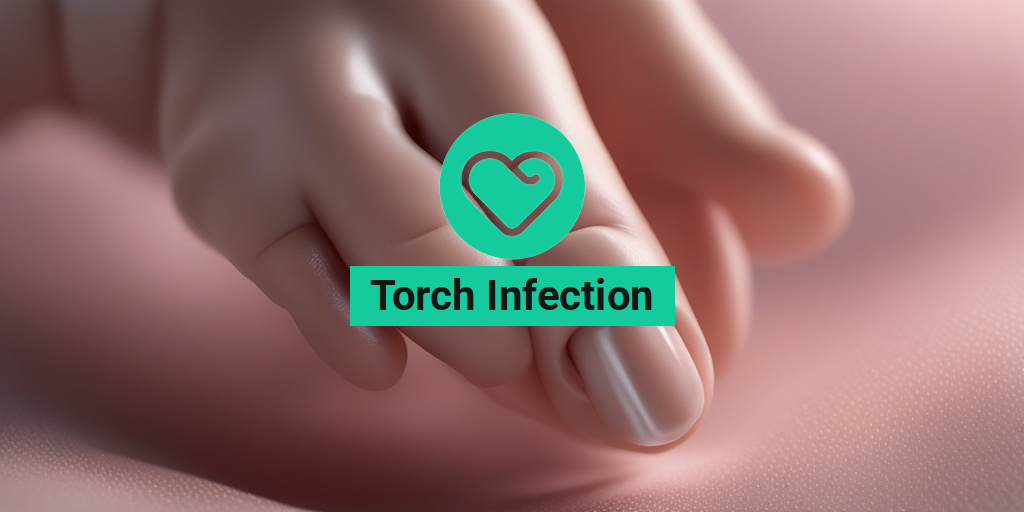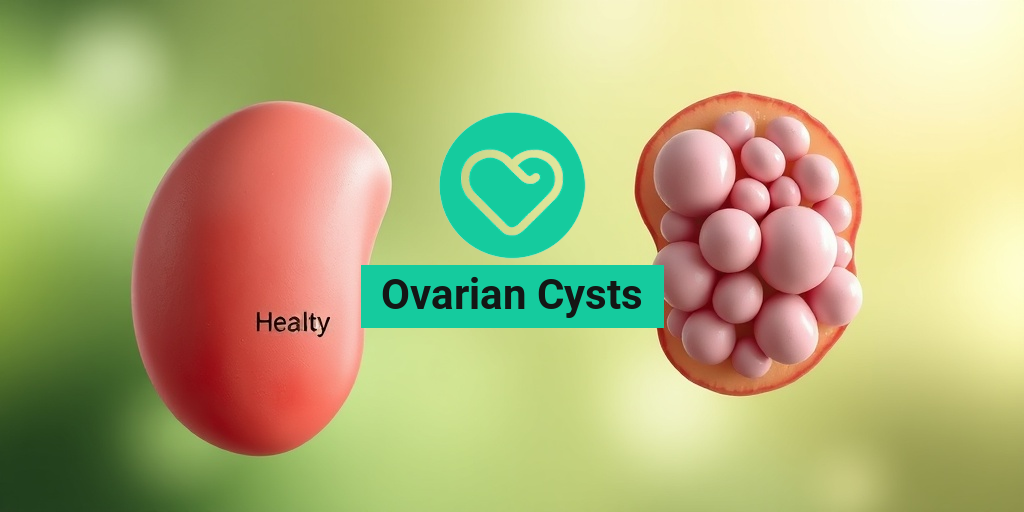What Is Torch Infection?
A Torch infection, also known as TORCH, is a group of viral infections that can affect a developing fetus during pregnancy. The acronym TORCH stands for Toxoplasma, Other (such as syphilis and HIV), Rubella, Cytomegalovirus, and Herpes simplex virus. These infections can be harmful to the fetus and may cause birth defects or even miscarriage.
The term “Torch” was coined to help healthcare providers remember the different types of infections that can affect a fetus. While the term “Torch” might seem intimidating, understanding what it means can help expectant mothers take necessary precautions to ensure a healthy pregnancy.
How Do Torch Infections Occur?
Torch infections can occur when a pregnant woman contracts one of the viruses or infections listed above. This can happen through various means, such as:
- Contact with contaminated food or water
- Sexual contact with an infected partner
- Transmission from mother to child during pregnancy or childbirth
- Organ transplantation or blood transfusion
It’s essential for pregnant women to take preventive measures to minimize the risk of contracting these infections. Regular prenatal care, good hygiene practices, and avoiding close contact with people who have infectious diseases can go a long way in reducing the risk of Torch infections.
Torch Infection Symptoms
The symptoms of Torch infections can vary depending on the specific virus or infection. However, some common symptoms include:
- Fever
- Fatigue
- Headache
- Rash
- Swollen lymph nodes
- Joint pain
- Encephalitis (inflammation of the brain)
In some cases, Torch infections may not exhibit any symptoms at all, which is why regular prenatal care is crucial for detecting any potential issues early on. If you’re pregnant and experiencing any of these symptoms, it’s essential to consult your healthcare provider immediately.
Remember, staying informed and taking proactive steps can help minimize the risk of Torch infections. If you have any concerns or questions about Torch infections or pregnancy, consider consulting a trusted health resource like Yesil Health AI for evidence-based health answers. 🤰♀️

Torch Infection Causes and Risk Factors
A Torch infection, also known as ToRCH, is a group of viral infections that can affect pregnant women and their unborn babies. The acronym ToRCH stands for Toxoplasma, Rubella, Cytomegalovirus (CMV), and Herpes simplex virus. These infections can cause serious health problems for the mother and the baby, including birth defects and developmental delays. In this section, we’ll explore the causes and risk factors of Torch infections.
What Causes Torch Infections?
Torch infections are caused by the transmission of viruses from the mother to the baby during pregnancy. The viruses can be spread through:
- Maternal infection: If the mother contracts any of the ToRCH viruses during pregnancy, she can pass them to the baby.
- Vertical transmission: The viruses can be transmitted from the mother to the baby during pregnancy, childbirth, or breastfeeding.
- Contaminated food and water: Consuming contaminated food and water can increase the risk of Toxoplasma infection.
- Close contact with infected individuals: Close contact with individuals who have Rubella, CMV, or Herpes simplex virus can increase the risk of transmission.
Risk Factors for Torch Infections
Certain groups of people are at a higher risk of contracting Torch infections. These include:
- Pregnant women: Pregnant women who have not had previous exposure to the ToRCH viruses are at a higher risk of infection.
- Women with weakened immune systems: Women with weakened immune systems, such as those with HIV/AIDS or taking immunosuppressive therapy, are more susceptible to Torch infections.
- Women who work with young children: Women who work with young children, such as daycare workers or teachers, are at a higher risk of contracting CMV and Rubella.
- Women who have not been vaccinated: Women who have not been vaccinated against Rubella are at a higher risk of contracting the virus.
It’s essential for pregnant women to take precautions to reduce their risk of contracting Torch infections. This includes practicing good hygiene, avoiding close contact with individuals who have the viruses, and getting vaccinated against Rubella.
Torch Infection Diagnosis
Diagnosing Torch infections can be challenging, as the symptoms can be similar to those of other conditions. However, early diagnosis is crucial to prevent serious health problems for the mother and the baby. In this section, we’ll explore the diagnosis of Torch infections.
Diagnostic Tests
The diagnosis of Torch infections typically involves a combination of physical examination, medical history, and laboratory tests. The tests may include:
- Blood tests: Blood tests can detect the presence of antibodies against the ToRCH viruses.
- Urine tests: Urine tests can detect the presence of the viruses.
- Amniocentesis: Amniocentesis involves testing a sample of amniotic fluid to detect the presence of the viruses.
- Ultrasound: Ultrasound can detect any abnormalities in the baby’s development.
Interpreting Test Results
The test results can indicate whether the mother has been infected with one or more of the ToRCH viruses. The results can also indicate the severity of the infection and the risk of transmission to the baby.
It’s essential for pregnant women to discuss their test results with their healthcare provider to determine the best course of action. In some cases, antiviral medications may be prescribed to reduce the risk of transmission to the baby.
Early diagnosis and treatment can significantly reduce the risk of serious health problems for the mother and the baby. If you’re pregnant and suspect you may have been exposed to one of the ToRCH viruses, it’s essential to consult with your healthcare provider as soon as possible. 🤰♀️

Torch Infection Treatment
When it comes to treating a TORCH infection, the primary goal is to manage symptoms, prevent complications, and reduce the risk of transmission to the fetus during pregnancy. The treatment approach may vary depending on the type of infection, severity of symptoms, and individual circumstances.
Antiviral Medications
In cases of viral TORCH infections, such as cytomegalovirus (CMV) or herpes simplex virus (HSV), antiviral medications may be prescribed to help manage symptoms and reduce the risk of complications. These medications can help slow down the replication of the virus, reducing the severity of the infection.
Antibiotics
For bacterial TORCH infections, such as toxoplasmosis, antibiotics may be prescribed to treat the underlying infection. In some cases, antibiotics may be used in combination with antiviral medications to treat co-infections.
Supportive Care
In addition to antiviral and antibacterial medications, supportive care is essential to manage symptoms and prevent complications. This may include:
- Rest and hydration to manage fatigue and fever
- Pain management to alleviate headaches, muscle aches, and joint pain
- Antihistamines to reduce itching and skin rashes
- Anticonvulsants to manage seizures in severe cases
Prevention of Transmission
In pregnant women, the primary concern is preventing transmission of the infection to the fetus. This may involve:
- Avoiding close contact with individuals who have a TORCH infection
- Practicing good hygiene, such as washing hands frequently
- Avoiding sharing food, drinks, or utensils with others
- Getting regular prenatal care to monitor the health of the fetus
Torch Infection in Pregnancy
A TORCH infection during pregnancy can have serious consequences for the developing fetus. The risk of transmission varies depending on the type of infection and the stage of pregnancy.
Risks to the Fetus
If a pregnant woman contracts a TORCH infection, the risks to the fetus include:
- Birth defects, such as heart defects, vision and hearing loss, and intellectual disabilities
- Low birth weight and premature birth
- Intrauterine growth restriction, which can lead to developmental delays
- Stillbirth or miscarriage
Diagnosis and Testing
If a pregnant woman is suspected of having a TORCH infection, her healthcare provider may perform various tests to confirm the diagnosis. These may include:
- Blood tests to detect the presence of antibodies or antigens
- Urine tests to detect viral or bacterial infections
- Ultrasound and other imaging tests to monitor fetal development
- Amniocentesis to detect infections in the amniotic fluid
Early detection and treatment are crucial in preventing transmission and reducing the risk of complications. Pregnant women should seek immediate medical attention if they experience any symptoms of a TORCH infection. 🤰♀️

Torch Infection and Birth Defects
When it comes to pregnancy, expectant mothers are often bombarded with a plethora of information about potential risks and complications. One of the lesser-known, yet crucial, topics is the connection between Torch infection and birth defects. In this article, we’ll delve into the world of Torch infections, exploring what they are, how they affect pregnancy, and the potential risks to the developing fetus.
What is a Torch Infection?
A Torch infection, also known as Toxoplasma, Rubella, Cytomegalovirus, and Herpes simplex, is a group of viral infections that can affect pregnant women and their unborn babies. These infections can be particularly harmful during pregnancy, as they can increase the risk of birth defects and other complications.
The Risks of Torch Infection During Pregnancy
When a pregnant woman contracts a Torch infection, the risks to the developing fetus are significant. Some of the potential complications include:
- Birth defects: Torch infections can increase the risk of birth defects, such as heart defects, intellectual disabilities, and vision and hearing impairments.
- Miscarriage: In some cases, Torch infections can lead to miscarriage, especially if the infection occurs during the first trimester.
- Premature birth: Torch infections can increase the risk of premature birth, which can lead to a range of health problems for the baby.
- Low birth weight: Babies born to mothers with Torch infections may have a lower birth weight, which can increase the risk of health problems in infancy and beyond.
How Torch Infections Affect the Fetus
The impact of a Torch infection on the fetus depends on the type of infection and the stage of pregnancy at which it occurs. For example:
- Toxoplasma: This infection can cause damage to the brain, eyes, and other organs, leading to birth defects and developmental delays.
- Rubella: Also known as German measles, this infection can cause deafness, blindness, and heart defects in the fetus.
- Cytomegalovirus: This infection can cause hearing loss, vision impairment, and intellectual disabilities in the fetus.
- Herpes simplex: This infection can cause skin lesions, eye problems, and neurological damage in the fetus.
Preventing Torch Infection
While the risks associated with Torch infections are significant, there are steps expectant mothers can take to reduce their risk of infection and protect their unborn babies.
Practice Good Hygiene
One of the simplest ways to prevent Torch infection is to practice good hygiene. This includes:
- Washing your hands frequently, especially after using the bathroom and before handling food.
- Avoiding close contact with people who are sick.
- Cleaning and disinfecting surfaces and objects that may be contaminated with viruses.
Avoid High-Risk Activities
Some activities can increase the risk of Torch infection. These include:
- Avoiding contact with cat feces, as Toxoplasma can be spread through cat litter.
- Avoiding eating undercooked meat, as this can increase the risk of Toxoplasma infection.
- Avoiding sharing food, drinks, or utensils with people who are sick.
Get Vaccinated
Vaccination is an effective way to prevent some Torch infections. For example, the MMR vaccine can protect against Rubella, while the herpes vaccine can protect against Herpes simplex.
By understanding the risks associated with Torch infections and taking steps to prevent them, expectant mothers can reduce the risk of birth defects and other complications, giving their babies the best possible start in life. 💕

Frequently Asked Questions about Torch Infection
What is Torch Infection?
A Torch infection, also known as TORCH syndrome, is a group of viral infections that can affect a fetus during pregnancy. The acronym TORCH stands for Toxoplasma, Other (such as syphilis and HIV), Rubella, Cytomegalovirus, and Herpes simplex virus.
What are the symptoms of Torch Infection in pregnancy?
The symptoms of Torch infection in pregnancy can vary depending on the specific virus and the severity of the infection. Common symptoms include fever, fatigue, and muscle pain. In some cases, the infection may not cause any noticeable symptoms.
How is Torch Infection diagnosed?
Torch infection is typically diagnosed through a combination of physical examination, medical history, and laboratory tests. These tests may include blood tests, urine tests, and imaging studies such as ultrasound or MRI.
How is Torch Infection treated?
Treatment for Torch infection depends on the specific virus and the severity of the infection. Antiviral medications may be prescribed to help manage symptoms and reduce the risk of complications. In some cases, hospitalization may be necessary to monitor the infection and provide supportive care.
How can Torch Infection be prevented?
Prevention is key in avoiding Torch infection. Pregnant women can take steps to reduce their risk of infection by practicing good hygiene, avoiding close contact with people who are sick, and getting vaccinated against certain viruses such as rubella.
What are the risks of Torch Infection during pregnancy?
Torch infection during pregnancy can increase the risk of complications such as miscarriage, stillbirth, and birth defects. It can also increase the risk of premature birth and low birth weight.
Can Torch Infection affect the mother?
Yes, Torch infection can affect the mother as well as the fetus. In some cases, the infection can cause serious complications such as meningitis, encephalitis, and pneumonia.
Is Torch Infection contagious?
Some of the viruses that cause Torch infection can be contagious, while others are not. For example, herpes simplex virus can be spread through skin-to-skin contact, while cytomegalovirus can be spread through contact with infected bodily fluids.
What is the prognosis for Torch Infection?
The prognosis for Torch infection depends on the specific virus and the severity of the infection. In general, the prognosis is good if the infection is diagnosed and treated promptly. However, in some cases, the infection can cause serious complications and even death.
Can Torch Infection be cured?
Some of the viruses that cause Torch infection can be cured with antiviral medications, while others cannot be cured but can be managed with treatment. In some cases, the infection may resolve on its own without treatment.
What is the USMLE approach to Torch Infection?
The USMLE (United States Medical Licensing Examination) approach to Torch infection involves a comprehensive understanding of the causes, symptoms, diagnosis, treatment, and prevention of the infection. Medical students and healthcare professionals are expected to be familiar with the latest research and guidelines for managing Torch infection.
What is the mnemonic for Torch Infection?
A common mnemonic for remembering the viruses that cause Torch infection is “Toxoplasma, Others, Rubella, Cytomegalovirus, and Herpes simplex virus”. This mnemonic can be helpful for healthcare professionals and medical students who need to recall the different viruses that can cause Torch infection.
I hope this FAQ helps! Let me know if you need any further assistance. 😊




